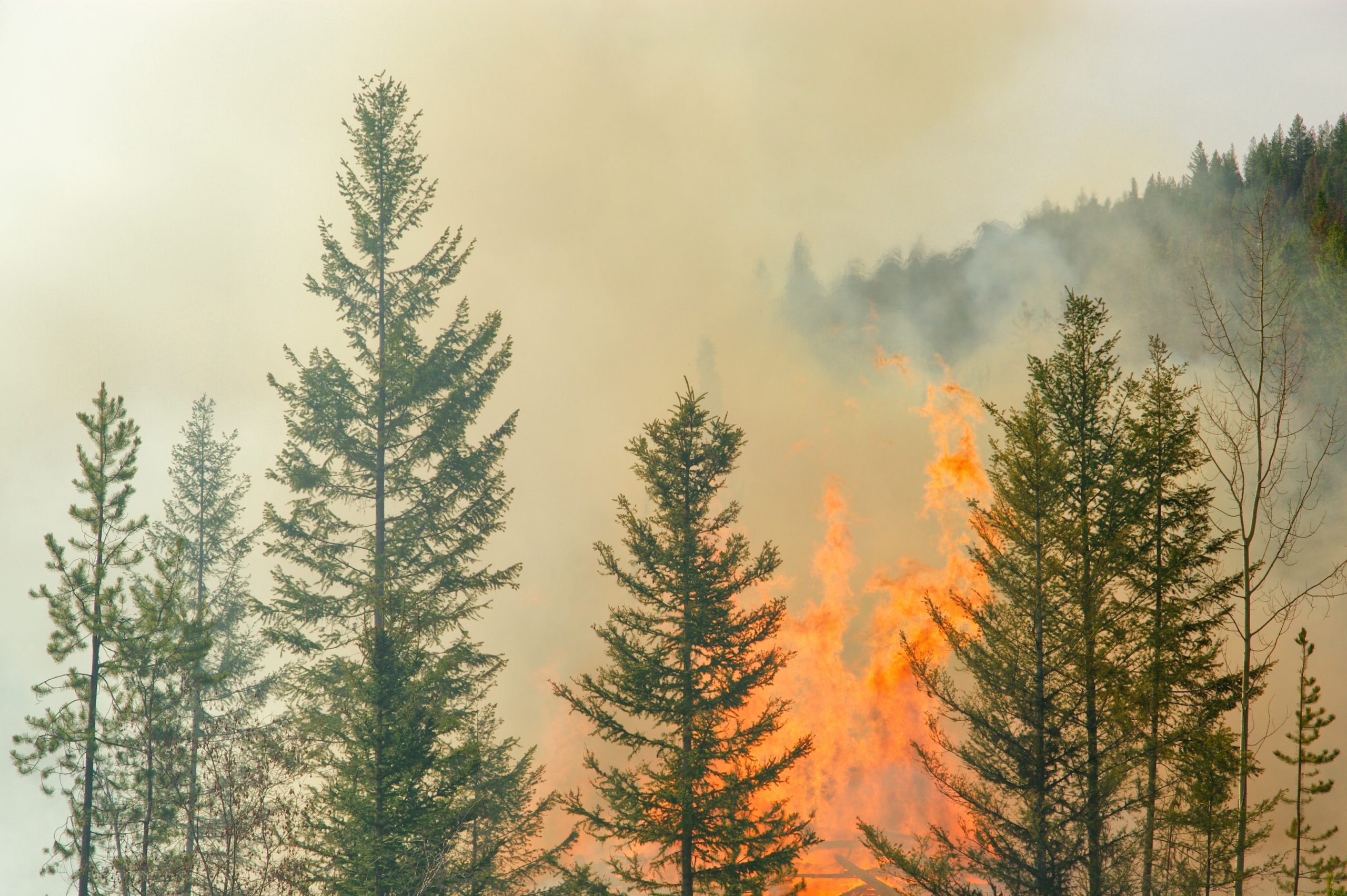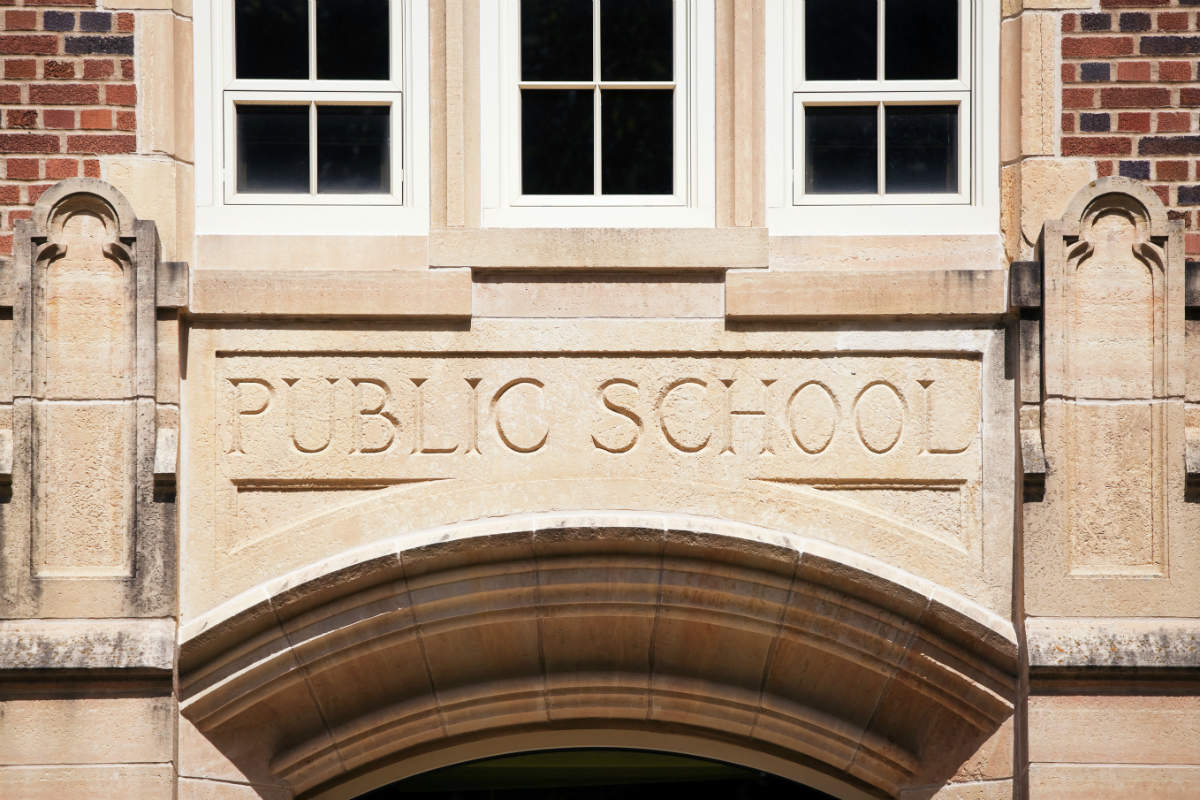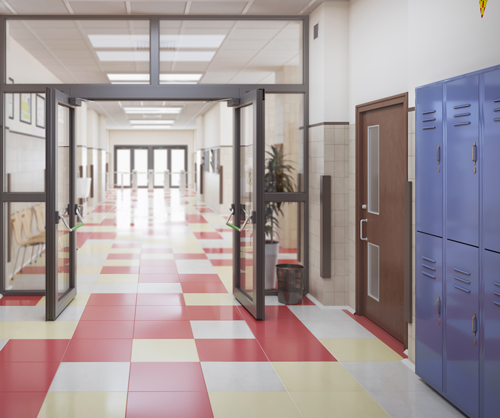Recognizing demands from students and the urgent action needed to combat climate change, a statewide coalition of nearly 50 stakeholders — including doctors, medical and environmental health researchers, educators, youth and community groups, and other experts — convened in 2021 to examine the challenges of climate change from the perspective of children’s health and education.
The resulting report, Climate Resilient California Schools: Safeguarding Children’s Health and Opportunity to Learn in TK-12 — written under the leadership of Stanford University’s Sean N. Parker Center for Allergy and Asthma Research, Center for Innovation in Global Health, Action Lab for Planetary Health (ALPHA) and the University of California, Berkeley’s Center for Cities + Schools — lays out a “transformative vision for California schools that are climate-resilient and sustainable.”
The report cites not just a moral responsibility to listen to youth and science around climate change, but a civic one. “Covering 125,000 acres of ground and encompassing 730 million square feet of buildings, the schools are a main part of the state’s infrastructure that must be activated as part of our climate solution,” according to the report.
Children’s health
As climate-related heat, wildfires and drought touch every area of the state, the danger to children’s developing bodies also intensifies, affecting their ability to learn. As heatwaves soar in untypical areas of the state such as coastal communities, schools are often not equipped with needed air conditioning units, causing an unsafe learning environment. In addition, the report states that “children are at risk for thermal burns or heat-related illnesses on unshaded playgrounds with asphalt or artificial turf. On a 68-degree day, asphalt can reach 120 degrees.”
Air pollution caused by California wildfires in 2020 was 120 times more than the total amount of pollution released by all vehicles on the road that year; wildfire smoke exposure results in worsening childhood asthma. Scientists project that the level of smoke pollution in the state will increase by 50 percent or more by 2050, according to researchers.
Finally, in the trifecta of climate woes, the report cites increasingly severe drought and flooding in the state. While the two seem at odds, climate change brings them together. “These extremes can co-exist, representing the abnormals in climate change. Drought results in critical water shortages and longer, more intense wildfire seasons, while atmospheric rivers cause massive damage in the form of mudslides, physical injuries, and damaged homes and roads,” the report states.
It also refers to the inequitable disparities experienced by low-income students and students of color, whose neighborhoods are more likely to have the highest levels of air pollution and lack tree canopies that provide relief from heat.
The report notes that while these climate factors harm students’ physical health, they also take a toll on their mental health, especially in areas directly affected by wildfires and flooding. “Children today are expressing unprecedented levels of anxiety related to the climate and environment. In the largest survey ever conducted on climate anxiety in young people, perspectives gathered from over 10,000 youth in over 10 countries found significant levels of psychological distress associated with climate change. Approximately three-quarters of young people felt that the ‘future is frightening,’ and about half reported experiencing climate anxiety to a degree that affected their daily lives,” according to the report.
Researchers found that California schools are ill-equipped to adapt to emerging climate challenges, primarily due to historic underinvestment in school facilities. Researchers estimate that 40 percent of California’s 11,000 public schools are more than 50 years old. “Only about 15 percent of California school districts are meeting industry standard benchmarks for annual spending on basic operations, upkeep, and renewal of their facilities” and a 2020 analysis found that 38 percent of all California students attend schools that fail to meet basic facilities standards.
The path forward
“California’s K-12 public school buildings produce an estimated 9 percent of all emissions from non-residential buildings in California, equivalent to 783,000 gas-powered cars on the road. Emissions from cars and buses going to and from schools add to the total,” states the report.
To begin to create climate-resilient, sustainable schools, the report recommends that each facilities project — whether new construction, retrofitting and repair, or replacement — be evaluated on its ability to protect students and teachers from climate-related health hazards and disruptions.
“Planning for all new construction, renovation, and retrofitting of school buildings should be guided by sustainability criteria like those offered by Advanced Energy Design Guides, Leadership in Energy and Environmental Design (LEED), the Collaborative for High Performance Schools (CHPS), and Emerging Technologies Coordinating Council, which include building with non-toxic materials that are recycled or produced in a way that conserves raw materials. These measures can reduce cost while streamlining water and energy consumption and creating healthier conditions for learning,” the report states.
In order to minimize schools’ greenhouse footprint, the report recommends that all indoor infrastructure, including HVAC systems, water heaters and cooking equipment, be electrified. Other recommendations include installing/upgrading HVAC systems, creating green schoolyards, electrifying bus fleets, growing regenerative food systems, and installing water-efficient plumbing systems.
The report also covers the need for improved climate education in California schools and more financial and technical support at the state level to help schools reinvent themselves for a new era. It also outlines calls for a state-level master plan for climate-resilient and sustainable schools, and provides an outline.
“California will neither achieve nor sustain carbon neutrality unless our elementary and secondary schools are transformed into sites of climate mitigation and energy efficiency,” according to the report.





